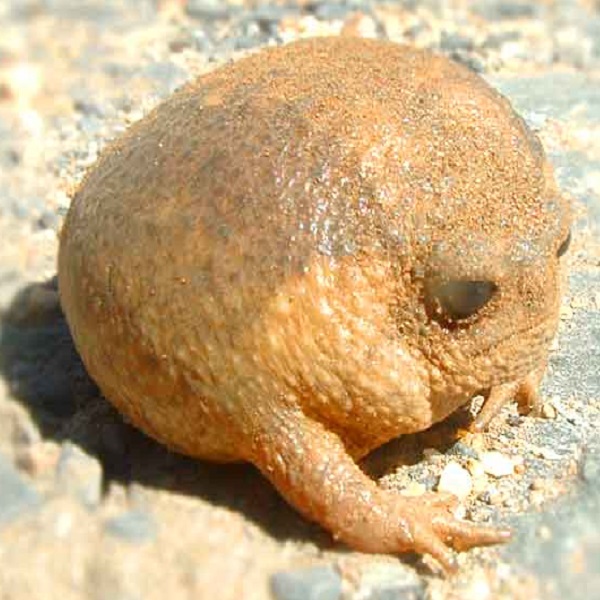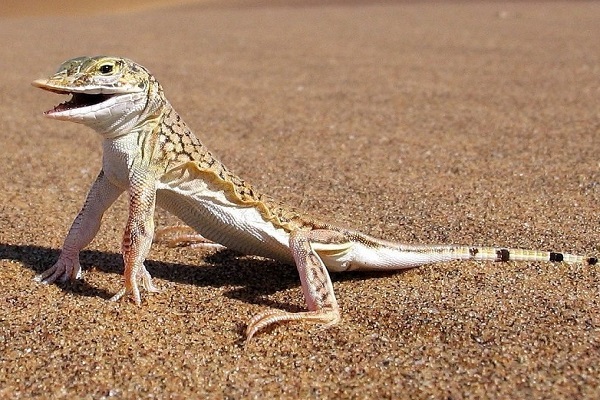 Desert animals are currently the focus of many researchers who are studying how humans can learn to reduce their impact on the planet. Deserts are harsh and resources for their inhabitants are always in short supply, so most animals have adapted to life without some vital resources, and most of them survive just fine in conditions that would otherwise be considered uninhabitable. From ants that survive at 150 degrees Fahrenheit, temperatures hot enough to fry them alive, to lizards that simply dance in the valley of death, here are 10 amazing desert survival skills.
Desert animals are currently the focus of many researchers who are studying how humans can learn to reduce their impact on the planet. Deserts are harsh and resources for their inhabitants are always in short supply, so most animals have adapted to life without some vital resources, and most of them survive just fine in conditions that would otherwise be considered uninhabitable. From ants that survive at 150 degrees Fahrenheit, temperatures hot enough to fry them alive, to lizards that simply dance in the valley of death, here are 10 amazing desert survival skills.
Antelope that changes skin color
Changing skin colour is not something most mammals can do, as they do not have the same abilities as a chameleon. Addax antelopes are one of the most endangered animals in the wild, with fewer than 500 individuals left in the wild. They are also the most well-adapted antelope to surviving in the desert. They have flat hooves so their feet do not sink into the desert, but most importantly, when summer comes, their coat changes from a brownish-grey to a white colour that reflects the heat. They can also dig shallow burrows next to boulders to escape the scorching heat.
Lizard drinking through skin
Imagine being able to stand still in the desert, let enough dew accumulate on your skin, then soak it all up, bring it to your mouth and drink. Spiny devil lizards, native to the Australian deserts, also have these superpowers. They can drink water from any part of their body, including from wet sand and desert puddles. They are the ultimate survivors, with skin that acts like a straw to absorb the rare resource wherever they find it, with any part of their body that comes into contact with it.

Side snakes
Snakes typically crawl with their entire bodies on the surface. Their bodies touching the ground allow them to escape faster, but in the desert, this can be disastrous. The more parts of your body that are in contact with the ground, the higher your chances of being burned alive. The Peringuey's viper is one of the fastest sidewinders in the snake world and can reach speeds of up to 18 miles per hour in desert sand. For these snakes, sidewinding is like a galloping horse, as the snake moves much faster and keeps most of its body off the ground.
Red dune ants just keep walking
The Namib Desert, one of the hottest places on earth, is also home to one of the most gentle creatures in the world. The idea of an anthill in a sea of hot sand may be unimaginable, but red ants are one of the best survivors of this hell on earth. They build their nests under sparse patches of dry grass, but hunt on the surface all day, which means they can survive the heat. To avoid getting baked, they make sure to spend as little time in each location as possible. So, unlike other ants, which choose the best and biggest meal they can carry, these ants only choose the food they can carry, and only one individual carries a load at a time to prevent delays. The ants also keep moving all the time to avoid getting baked.
Scorpions hibernate while hunting.
Hibernation has kept more species alive than any other adaptation, but none has done it as well as desert scorpions. While other hibernators go underground and shut down most bodily functions to conserve resources, desert scorpions do it right there while still hunting. They can lower their heart rate and shut down most bodily functions while remaining awake and alert enough to catch prey.

Pixie Frog Turns Its Skin Into a Cocoon
The giant African pixie is one of the largest frogs in the world and has somehow adapted to living in places where water supplies are inconsistent. As a result, the frog has adapted to extremely long dry periods of more than two years. When the dry season comes, the frog burrows up to 5 meters underground and stays there, feeding on its own body reserves, until the rains come again. It simply turns part of its skin into a protective sac that covers its entire body, and then moistens it with mucus, creating something similar to an amniotic sac. It simulates pregnancy by floating in the pouch and feeding on its own body reserves.
Golden Wheel Spider
This is one of the most intelligent spiders in the world, capable of burrowing up to half a metre into the sand in search of insects and shelter from the desert heat. However, the spider is also prey to the bumpren wasp, which can easily turn them into zombies and lay its eggs on them. The wasp can fly and also dig through the sand faster than the spider, so when cornered, the spider can run at surprisingly high speeds to the steepest end of the dune before performing its final miracle. The spider curls up into a wheel and simply glides down the dune under the influence of gravity at a speed that would seem astonishing to the wasp. 
Dancing Lizard Tricks
The shovel-snouted lizard, also called the dancing lizard, is the quintessential desert machine. It can literally run across the desert sand on its two hind legs, using its front legs only for steering. It also has incredible speed, which allows it to catch as many insects in the hot sand as possible in the shortest time to prevent overheating and prolonged exposure to predators.
If his hunting expedition takes too long, he begins a dance in which he keeps only one hind leg and one front leg in contact with the ground at a time. When the legs in contact with the ground reach the same temperature as the hot sand, the lizard turns his legs and lifts the two heated legs to release heat. The dance continues until he no longer loses all the excess heat he absorbs by going under the sand to cool off.
Vultures peed in turkey
To prevent water loss, most desert animals simply do not urinate. They have other methods of releasing toxic waste. However, turkey vultures are one of the wonders of nature, as they are the only known species of bird known to urinate. Their urine is a light mixture of urine and poop, which they coat their legs with. When hot air hits them, the urine evaporates, leaving a white lining covering their legs that also reflects the sun's heat. And yes, they can also vomit dead, rotten flesh when attacked.
Roadrunner Shouts Toxic Minerals
The roadrunner can fly well, but it prefers to run on the ground and conserve energy, as its long legs allow it to traverse bushes with ease. Most birds excrete toxic waste in the form of uric acid through their feces. Roadrunners, on the other hand, absorb all the water from their feces before releasing it, meaning they cannot effectively remove soluble toxins with their feces. As a secondary survival mechanism, they have glands near their eyes that remove salt and excess minerals, making them look like they are crying. The gland is common in seabirds that drink salty seawater, but roadrunners are simply a special kind of land bird.













Оставить Комментарий